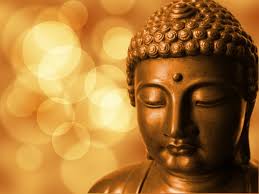


Awareness is a quality of being awake and present to the moment. All great athletic performances are an example of how awareness fuels high level performance.
How does this apply to our, more mundane, lives? How can we tap into that quality of awareness to enhance our lives?
Once we can identify and understand what this quality of awareness is, we have the key to self-mastery in virtually every area of our lives.
According to great masters like Lao Tzu or Buddha, most of us move through our lives like sleepwalkers. Never really present in what we are doing, never fully alert to our environment, and not even aware of what motivates us to do and say the things we do. A lack of awareness can allow us to be completely taken over by negative emotions.
The Difference Awareness Makes
With awareness, when we become irritated, or angry, whatever it is—reactive in some way—sad or depressed, there’s an awake quality that this is happening in us. We have the observing presence in the background that’s more who we are rather than the emotion. We are still present as the emotions happen. We then have more mastery of ourselves and the situation.
Awareness is the key to being self-directed, centered, and free in every aspect of our lives. You can learn how to live life more attentively, mindfully, and meditatively, with love, caring and consciousness. You can examine and break free of the conditioned belief systems and prejudices that limit your capacity to live life in all its richness.
Cultivate A Clear Mind
To fuel our highest level performance we need a clear mind. If the mind is filled with fear, self-sabotaging beliefs, and self-doubt, we are impeded, a bit like driving a car with the brake on. Emotional turmoil clouds our view and we cannot perform well.
A practice of becoming aware of the mind, and learning to witness the thoughts so they pass by, and don’t affect us, is key.
A man came to the Japanese Zen master Ikkyo and asked him for some words of wisdom to guide him in life. Ikkyo nodded agreeably and wrote on a piece of paper the word “attention.” The man said he could not understand and asked for something more. Ikkyo wrote, “attention, attention.” After a further request for an explanation, Ikkyo wrote his final statement for the man. “Attention, attention, attention means attention.”
The special knack of meditation is to develop the one who pays attention, the watcher. When we do a simple sitting meditation, we sit comfortably with our eyes closed and just begin to watch the energies that move within us all the time: thoughts, sensations, emotions. We develop the knack of simply watching these distractions go by with a feeling of acceptance.
How do we acquire this knack? We begin by being a witness to the mind, by becoming disidentified from the mind.
If you watch a dog, you are clearly not the dog; if you look at a tree, you are separate from the tree. The same applies to the mind. Watching is the key. Watch the mind, without repressing, without preventing, without judging, and slowly you will begin to disidentify, realizing that you are not your thoughts, sensations, emotions.
Don’t Fight, Just Watch
When you try to meditate, and especially at first, thoughts will come, they will surround you from everywhere. They will be like clouds; even the little bit of blue sky will be lost. They will buzz like a swarm of bees stopping us from seeing clearly. And when there are too many thoughts, the natural instinct is to fight with them.
Try fighting with your own shadow. Thoughts are shadows. If you try to fight them you will be defeated.

The liberation you feel once you realize that you are not the mind can be extraordinary. There is no more anxiety, you are at ease, in a deep let-go. You know you can drop down beyond the mind to your inner haven of peace, calm and clarity. The mind becomes clean and clear, and you are more productive, focused and relaxed.
30-SECOND STOP TECHNIQUE
BENEFITS: This technique can almost instantly bring you to awareness and help you relax. By practicing this technique regularly, by and by a subtle relaxed alertness will begin to weave itself into your day. Just knowing that you can access this state of relaxation at any time helps you feel more in control of your life, more in touch with yourself.
You can do this technique while walking along the street, folding laundry, or sorting files at the office. While you are engaged in one of these activities, stop. Freeze. For 30 seconds just be present with whatever is happening. Are you breathing? How is your body? Where is the mind? Where are you? In the present? the past? the future? Watch, observe, notice yourself, without judgment. Then start moving again.
You can do this technique by yourself or with a friend. You might ask your friend to surprise you with a 30-second stop when you’re walking down the street. Or you can try it yourself anytime — at work, on the bus, in the grocery store, in an elevator, doing the dishes. But remember it must be done suddenly.
If you would like to publish this article on your website or magazine, you have my permission as long as you include the following: Reproduced with permission from Pragito Dove www.discovermeditation.com

“This was an exceptional training! One of the very best I have attended. I can now get started with the huge advantage of tremendous self-confidence. Thank you very much for your outstanding input.”
Debra Norwood – Memphis, Tennessee

This training was my first meditation experience, and it opened doors for me to discover my real, authentic self. I particularly liked the dancing and laughter meditations. As a result, I am more calm, confident, and creative. I really like myself now. The training has made a profound difference in my life, and I look forward to continuing this journey with joy and celebration.
Elena Benson, RN, CLM – Monrovia California

“Through this training, learning the expressive meditations, and working with Pragito individually, I have taken control of my health and life. I have discovered that listening to the wisdom of my heart helps me make better decisions. It is much easier now for me to raise my children with love, laughter, and wisdom. My whole family has benefited.”
Ronda still, LMC – Augusta Georgia

© 2023 All Rights Reserved, Pragito Dove & Discover Meditation
You’re registered for the FREE Breathe and Laugh webinars on August 17th and 19th (8am Pacific). The webinar details are being emailed to you now.
Would you like to also attend the 3-hour webinar on LOVE taking place on August 21st (9am Pacific). The cost is only $27. Space is limited, so please take advantage of this offer now.
Notifications
Leave a Reply